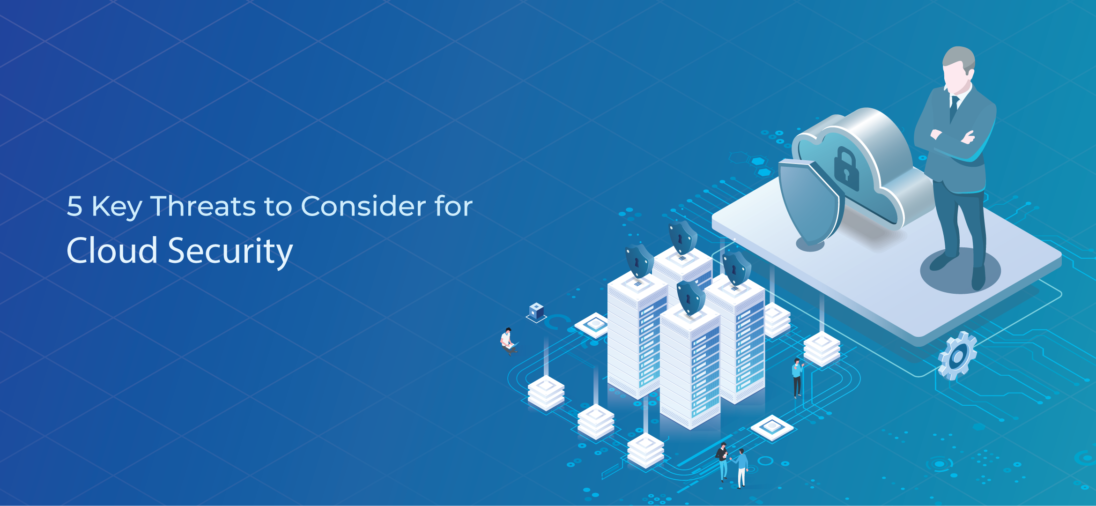In corporate environments, cloud computing platforms and services are being used in many ways, from storing service-related data to accessing productivity tools using Microsoft Office 365 and deploying IT environments in the cloud platform. With all these use cases, cloud services enable organizations to accelerate their business processes by providing agile technology at the best cost.
According to the cloud computing industry report circulated by Grandview Research, in 2019, the value of the cloud computing market was around USD 266.0 billion and is expected to grow at a CAGR rate of 14.9% during the forecast period of 2020 to 2027. In Trusted Security 2021, Flexera reported 92% enterprises using multi-cloud strategy and 82% using hybrid cloud strategy. On Average rate, around 2.6 respondents are using public clouds, and 2.7 are using private clouds. Also, 90% of enterprises have decided to exceed their prior cloud service plans due to the COVID-19 pandemic to promote their remote working.
These statistics of the cloud computing market make it clear that cloud services will continue to play larger roles in our lives and will transform from just being a choice to a necessity.
However, the advantages of cloud services also come with some risks and challenges regarding data security in the cloud environment. But most of the time, cloud customers are responsible for maintaining the security of data in the cloud ecosystem. Ensuring the security of cloud environments requires control and visibility of the threat factors.
This article contains information about some current key threats to cloud security that might occur while developing effective cloud security practices.
5 Key Threats to Cloud Environment Security:
Regulatory Compliance:
Storing sensitive data gathered from various fields in the cloud environment is subject to evolving compliances and regulations, where even a single point of failure can lead to a significant level of penalties. These compliances and regulations cover all sensitive information of students from FERPA to the patients’ health-related information from HIPAA.
Compliances ensures the security of the company confidential information by providing cybersecurity best practices. If your organization does not comply with it, you may be a liable candidate for monetary fines, as well as for criminal penalties. Therefore, organizations need to be in compliance.
Maintain Customers’ Trust:
Losing cloud data is bad news but losing the trust of customers is more painful because it takes years or even decades to develop loyal, trustworthy customer relationship. And losing such integrity may result in a reduced number of sales.
According to the survey of CSO Online, Adobe faced a breach of USD 1 Million, and then 15 different states banned them after that crisis. Also, other clouds services providing companies lost around 50% of quarterly profits after that data breach during a certain period.
When a cyberattack reaches its former heights, it is nearly impossible to overcome its after-effects in the trajectory of the company. Therefore, to stay away from such risks, it is always a good option to develop an effective cloud security strategy or policies for businesses, relying on cloud computing services.
Visibility Issues:
Many companies are still not aware of a reliable way to monitor and identify suspicious or unusual user behaviour. Therefore, it is critical for those companies to identify malicious activity and actors that are breaching the security layers of the company.
It also generates risks, for example, the employee is uploading sensitive data to the cloud, but it can be seen by another user who should not have access. Without a comprehensive cloud monitoring approach, it becomes harder for developers to identify peer issues that might create bigger problems in the long run. If hackers can easily look over your security vulnerabilities, then it is obviously critical for you to keep your organizational data safe from external risks. Limiting data access permission to authenticated devices for users is the only way to ensure security against such internal threats.
There are many user behavior analytics systems that perform analysis in the background. I.e., Splunk, Fortscale or Rapdi7, etc. With these tools or systems, businesses can focus more on their important business processes instead of worrying about security threats. These systems continuously and proactively monitor all business activities and web-traffic, whether they are coming from an authorized source or not.
Risk Management:
The first step in protecting your cloud and anticipating risks is to understand Cloud Security Posture Management (CSPM). It continuously monitors, adapts, and makes improvements to cloud security to prevent attacks. To get started with the CSPM provider, first, you need to invest in data protection that ensures the categorization process of incoming data by sensitivity, and it also allows you to decide the path where should it go. Highly sensitive company information should be encapsulated or needs extra care by the whole team.
Protecting Sensitive Data:
Your cloud should be protected through external keys and sensitive data through primary keys, which protect it from attacks by making sure that CSPM still has access to this data. It is an additional security layer on your sensitive data that can bring you relief. Also, it does not interrupt your cloud service providers from serving their best services. Additionally, to make your cloud security stronger, you can set some access controls, as we have discussed in our third point.
Be Cyber Secure:
By following these key factors closely, you will be able to design the best and most effective cloud security practices for your organization. If you need some expert guidance in creating cloud security best practices, then you’re at the right place. CloudStakes Technology Pvt. Ltd. is the leading cybersecurity provider in India. We have a dedicated team of cloud & cybersecurity experts who’ve helped many organizations to achieve the next level of cloud security.
SUMMARY:
In this blog, we have highlighted 5 emerging cybersecurity key threats that modern businesses are facing by overlooking some security vulnerabilities residing in their business IT solutions, along with some real incidents statistics and a solution to mitigate them.
